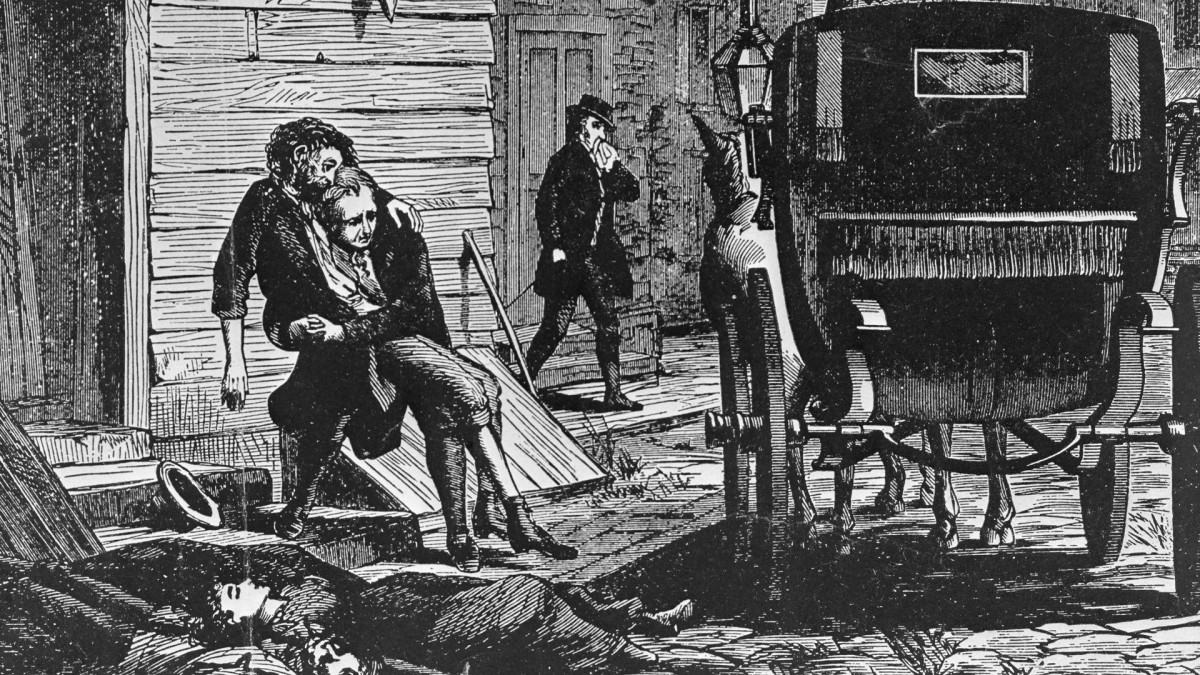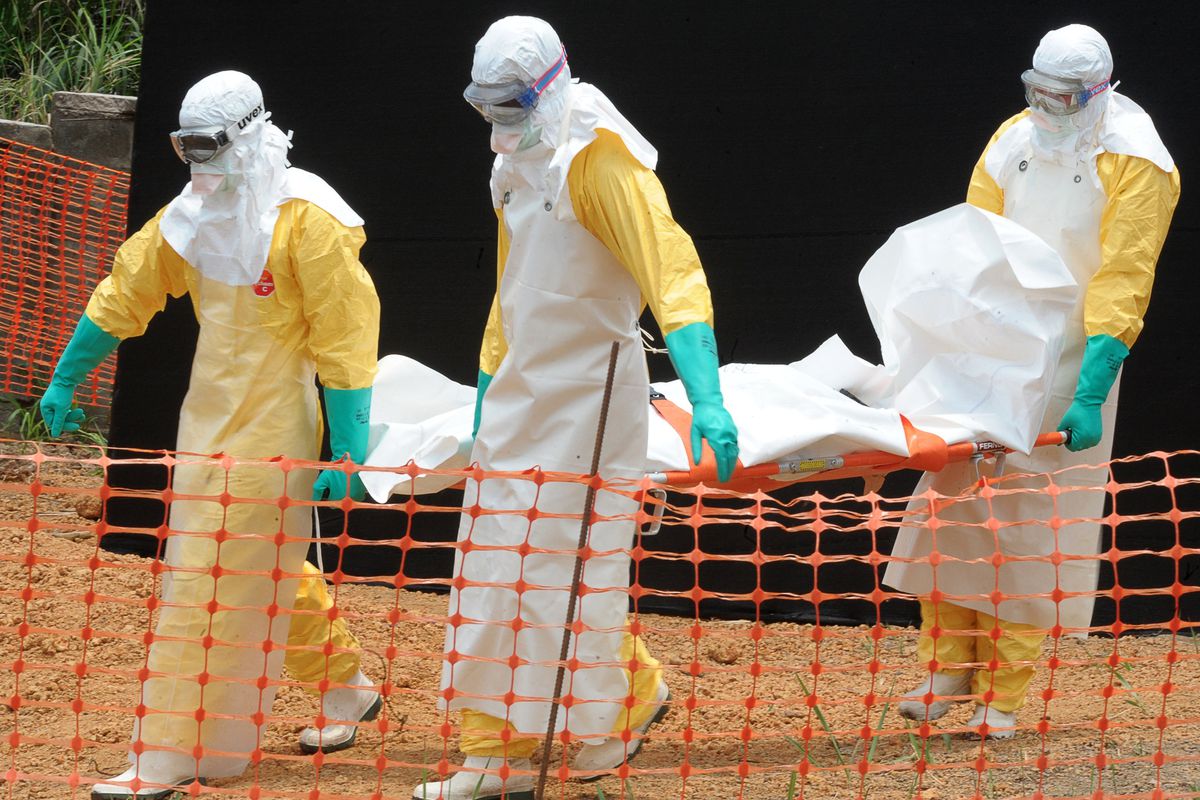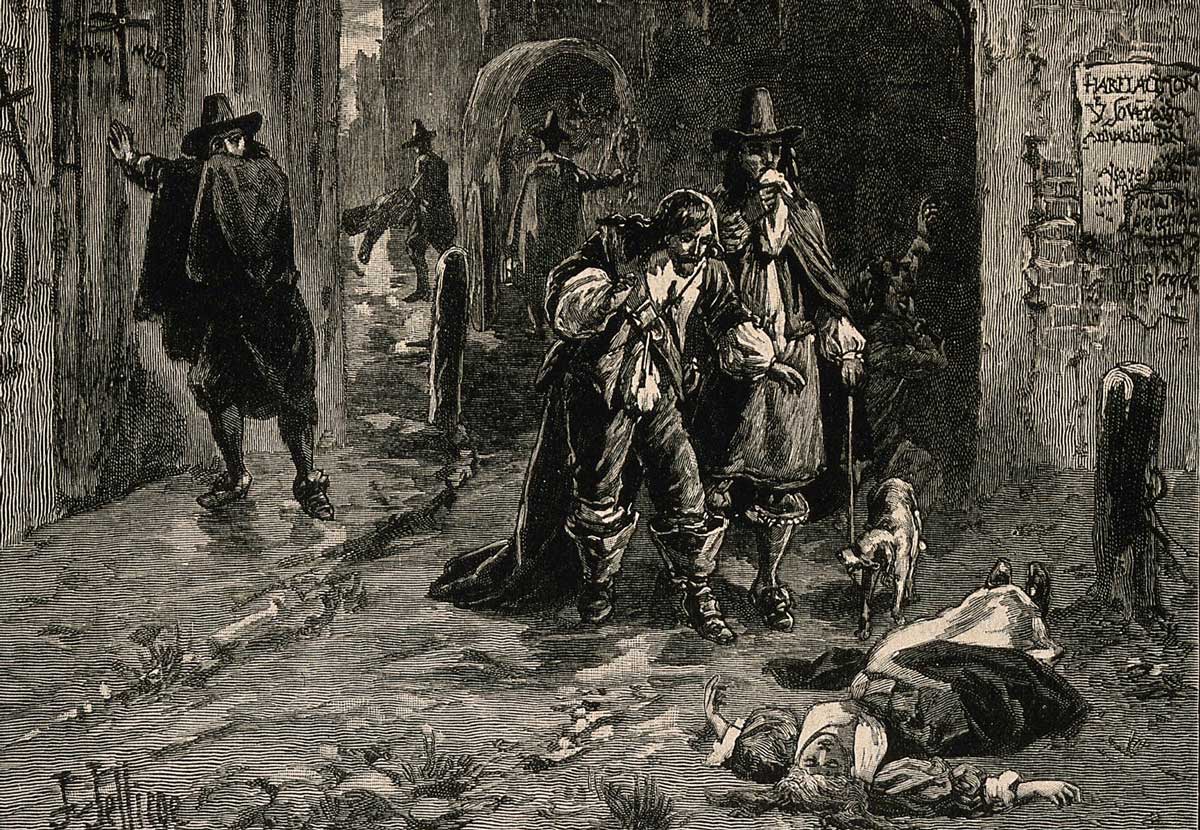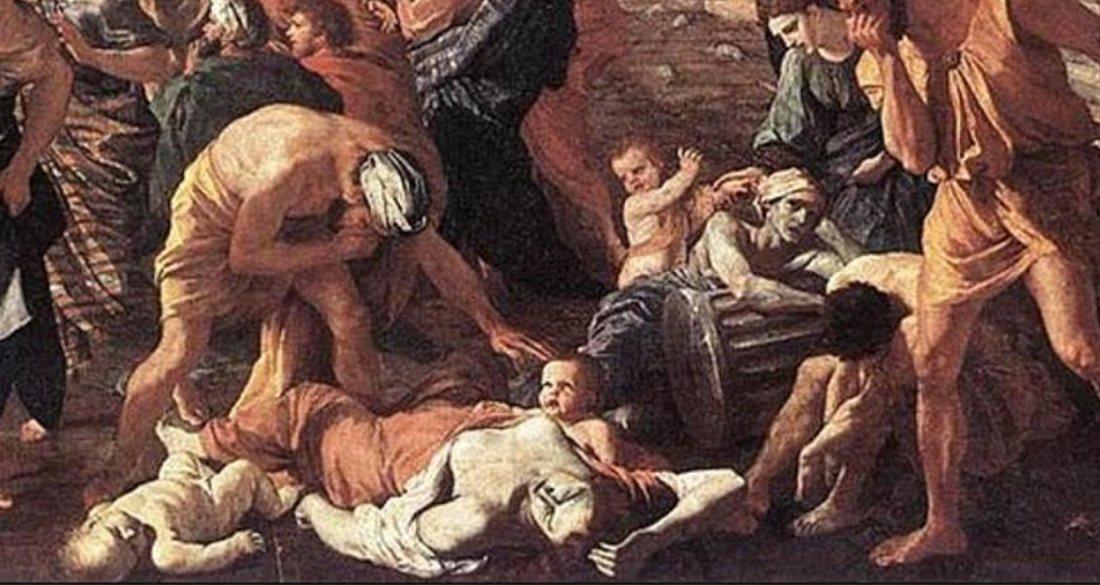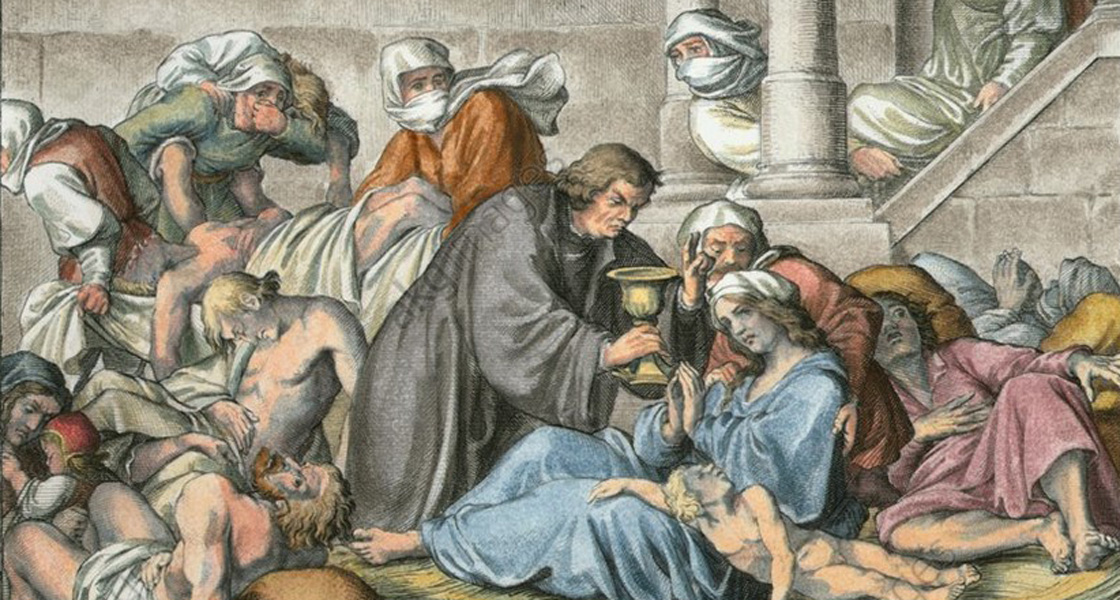Top Lists
Top 10 Deadliest Epidemics in History
The world has experienced some of the deadliest epidemics in history. Some of these epidemics claimed the lives of millions. See the full list.

Most people confuse an epidemic with a pandemic, whereas the two are distinct in so many ways. While an epidemic is an outbreak of a disease or virus within a given community, State, country, or region, a pandemic on the other hand is an outbreak of a disease or virus across international borders.
Most pandemics like the Covid-19 virus started as an epidemic until they spread from one country to another, wreaking havoc on citizens and claiming the lives of both the old and the young. In this article, RNN will highlight the top 10 deadliest epidemics in history. Let’s delve into it.
10. Zika Virus Epidemic- 2015-2016
Casualty- Not Recorded.
The Zika Virus Epidemic in South and Central America is one of the epidemics that are not so deadly. Although many believe that the Epidemic is still ravaging the Americas, the World Health Organization (WHO) declared the end of the pandemic in November 2016.
The Zika virus is spread through mosquitoes of the Aedes genus and it can equally be sexually transmitted. It is not harmful both to children and adults, however, infants in the womb have a high risk of getting infected and the attack on these infants can cause birth defects.
The species of mosquitoes that cause the Zika virus to thrive in warm and humid weather conditions and this very fact is what makes South and Central America prime areas for the virus to thrive.
9. Prehistoric Epidemic: Circa 3000 B.C
Casualty- Not Recorded
China has a now-popular prehistoric site in the northeastern part of the country as a discovery led to the establishment of an archaeological site called “Hamin Mangha”.
It is believed that an epidemic totally wiped out a prehistoric village in the country, leading to a mass burial for those affected. While the name of the epidemic is still unknown, dead bodies were found by scientists/archaeologists surveying the area in 2011.
The epidemic was reported to break out over 5,000 years ago, claiming the lives of people between the ages of 19-35. The bodies of people who died from this epidemic were piled in a house that was later burned down when found by scientists. Scientific findings proved that these people died from an epidemic. The pictures circulating on the internet showing the skeletons in the house are proof that this is one of the deadliest epidemics in history.
8. Philadephia Yellow Fever Epidemic- 1793
Casualty- 5,000 deaths.
The Philadephia Yellow Fever Epidemic is a disease outbreak that killed 10% of the city’s population at the time. Philadephia is a city in the United States of America (the country’s capital at the time). It was plagued by yellow fever in 1793, a disease transmitted by mosquitoes, and this epidemic claimed the lives of a total of 5,000 people.
During this time, officials in the city believed that African slaves were immune to the disease, hence, they recruited them to nurse the victims of the epidemic. The epidemic is believed to have thrived in the area as a result of the hot and humid summer weather during that time.
When winter arrived, however, the mosquitos died out and this led to the end of the epidemic. It may have claimed the lives of many more people if the weather had not changed.
7. American Polio Epidemic- 1916
Casualty- 6,000 deaths.
The American Polio epidemic began in New York. The deadly disease caused the death of 6,000 people in the U.S. with about 27,000 cases reported. The epidemic affects children majorly and kills those whose bodies are not resilient enough to fight back. Those who survive the polio disease are left with permanent disabilities like paralysis.
The epidemic spread rapidly after it broke out in the U.S thankfully, the Salk Vaccine was developed in 1954 and came to the rescue. As a result of the vaccine, the number of casualties and disease cases in the U.S. declined massively. The last case recorded in the U.S. was in 1979.
The polio disease has not been completely eradicated yet, however, occasional vaccination in various countries around the world helps stop the spread of the epidemic.
6. West African Ebola Epidemic- 2014-2016
Casualty- 11,325 deaths.
The West African Ebola Epidemic is another outbreak of disease that stands as one of the deadliest epidemics in history. The epidemic ravaged West Africa from 2014 to 2016 with the first case reported in Guinea in December 2013.
Not long after, the disease spread to other West African countries, Liberia and Sierra Leone. All three countries were the main places where the epidemic thrived the most. Lesser cases and casualties were however recorded in Nigeria, Mali, and Senegal.
Although there is no cure for Ebola, the epidemic has declined greatly in some countries and scientists are making efforts to develop a cure for the virus. The virus is said to have likely originated in bats. It would interest you to know that the 2014-2016 severe cases were not the first ever Ebola cases to be recorded. Way back in 1976, Sudan and the Democratic Republic of Congo reported the first known cases of Ebola.
The West African Ebola Epidemic caused a total of 11,325 deaths from 28,600 reported cases.
5. Plague of Athens- 430 B.C
Casualty- 75,000 – 100,000 deaths
The Plague of Athens was an epidemic that broke out around 430 B.C. during a war between two Greek cities, Athens and Sparta. The unforeseen disease started by causing heat and inflammation in the eyes of people who were believed to be in good health. Their throats and tongues also became bloody and emitted unpleasant and strange breath.
The epidemic is believed to have entered the city of Athens via its main source of food and supplies- Piraeus. It affected hundreds of thousands of people, including the leader of Athens at the time, Pericles. History has it that about 75,000 to 100,000 people died as a result of the epidemic.
Despite the breakout of the disease in the city, the war continued and didn’t end until 404 B.C. when Athens surrendered to Sparta. The end of the war was however not the end of the epidemic. According to Wikipedia, there were other breakouts of the disease in 429 B.C. and in the winter of 427/426 BC. It is said to have been caused by some 30 pathogens.
4. Great Plague of London- 1665-1666
Casualty- 100,000 deaths.
The Great Plague of London is so-called because it was the last of the bubonic plague that ravaged England during the Second Pandemic. It included diseases such as septicemic plague and pneumonic plague that lasted until the year 1750.
The Great Plague of London is reported to have killed about 100,000 people In 18 months, which is almost a quarter of the population of London. The plague was caused by the “Yersinia pestis bacterium” which is transmitted via bites by fleas or lice on a human body.
Although it is referred to as “The Great Plague”, it can not in any way be compared to the Black Death Pandemic that claimed the lives of up to 200 million people.
3. Antonine Plague- A.D. 165-180
Casualty- Over 5 Million deaths
The Antonine Plague was an epidemic that came into the Roman Empire through its soldiers. Upon their return from the campaign, they brought with them, spoils from their victory, but much more than that, they came with a disease, believed to be smallpox.
The epidemic claimed the lives of over 5 million people in the Roman Empire, affecting the country’s population and instilling fear in the hearts of many residents of the area at the time. It however brought about the end of the Pax Romana, a period of Peace, security, and stability in the Roman Empire.
After 180 A.D., the region experienced great instability and experienced a series of wars and invasions by some barbarian groups.
2. Cocoliztli Epidemic- 1545-1548
Casualty- 15 million deaths.
The Cocoliztli Epidemic, also known as “The Great Pestilence” is one of the deadliest epidemics in history. It was an outbreak of a deadly disease that claimed the lives of 15 million inhabitants of Mexico and Southern America combined.
The disease was characterized by high fever and bleeding. The name of the epidemic, “Cocoliztli” was coined by the Aztec people, meaning “pest”. It ravaged the Mexican highlands and led to the decline of indigenous populations. The Cocoliztli Epidemic is referred to as the worst epidemic in the history of Mexico. After the three-year period recorded, subsequent outbreaks occurred, affecting residents and claiming the lives of some.
According to Wikipedia, “Recent bacterial genomic studies have suggested that Salmonella, specifically a serotype of Salmonella enterica known as Paratyphi C, was at least partially responsible for this initial outbreak. Others believe cocoliztli was caused by an indigenous viral hemorrhagic fever, perhaps exacerbated by the worst droughts to affect that region in 500 years and poor living conditions for Indigenous peoples of Mexico following the Spanish conquest.”
1. Plague of Cyprian- A.D. 250-271
Casualty- Millions of People Reportedly Died.
The Plague of Cyprian was discovered in the same way the prehistoric epidemic of China was discovered. In 2014, archaeologists discovered a mass burial site for victims of the epidemic. Their findings serve as a source of information for us today.
Named after a bishop of Carthage (a Tunisian city), St. Cyprian, the plague is estimated to have killed up to 5,000 people a day in Rome alone. The victims tried to disinfect their bodies with lime which they manufactured for the epidemic. The mass deaths were equally a concern for the people of the Roman Empire as they had to set up a large bonfire to burn the bodies of the dead to preserve the environment.
The cause of the disease is still unknown, however, findings by scientists claim that “the bowels, relaxed into a constant flux, discharge the bodily strength [and] a fire originated in the marrow ferments into wounds of the fauces (an area of the mouth).”
Top 10 Deadliest Epidemics in History (Summary)
While we work towards updating you on the top 10 deadliest pandemics in history, here’s a list containing the top 10 epidemics in history as highlighted in this article.
- Plague of Cyprian- A.D. 250-271
- Cocoliztli Epidemic- 1545-1548
- Antonine Plague- A.D. 165-180
- Great Plague of London- 1665-1666
- Plague of Athens- 430 B.C
- West African Ebola Epidemic- 2014-2016
- American Polio Epidemic- 1916
- Philadephia Yellow Fever Epidemic- 1793
- Prehistoric Epidemic: Circa 3000 B.C
- Zika Virus Epidemic- 2015-2016



